
- O’pen Skiff Purchase Page
- ILCA – Element 6
- RS Sailboats
- Sunfish – Recreational
- Sunfish – Race Version
- Sunfish Sails
- LaserPerformance Sunfish Parts Price List
- 420 – Zim Sailing

Finding the Right Laser Rig: Formula
- Racks by Dynamic Dollies and Racks
- Load Rite Trailers
- Load Rite Sunfish Trailer
- **NEW** LoadRite for Sailboats
- Sunfish Dolly by Dynamic
- Optimist Dolly by Dynamic
- How to Apply Laser Sail Numbers
- Applying Laser Sail Numbers
- North Sails for LaserPerformance Dinghies
- About/Contact
Choices of Rigs for your Laser Hull :

Finding the Right Laser Rig – 3 Choices:
Now this is where it becomes a bit interesting because all three rigs fit and work exceptionally well with the Laser hull. Any sized sailor can sail with one of these rigs in most conditions and have fun. But what if you are thinking competitively? What is optimal for you? The quick and simple formula is this:
- 4.7 Rig – Designed for smaller sailors 110 – 140 lbs. (50 – 65 kg).
- Radial Rig – Used as the women’s Olympic class, and designed for sailors 140 – 175 lbs. (65-80 kg).
- Full or Standard Rig – Used as the men’s Olympic class, and designed for sailors 165 lbs.+ (75 kg+).”Olympic sailors are in the 180 lbs. range but club sailors do well weighing in over 200 lbs. in certain conditions.” Paraphrased from propercourse.blogspot.com
Laser 4.7 Rig:
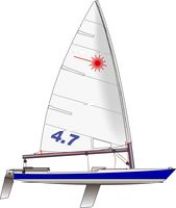
Laser Radial Rig:

A look at the hardware that changes the 3 rigs:
The Upper Mast section on the left side in this drawing is identical for all 3 rigs. It mates together with the other lower 3 mast section choices shown at the right. These parts are all available from Shoreline Sailboats along with class legal sails. The lower mast sections come with a gooseneck and vang tang; completely ready to go.
No matter which rig you choose, the Laser is a challenging boat that rewards athleticism, subtle steering, and trimming techniques, as well as tactical excellence.
Share this:
- Click to email this to a friend (Opens in new window)
- Click to share on Facebook (Opens in new window)
- Click to share on Twitter (Opens in new window)
- Click to print (Opens in new window)
- Click to share on Pinterest (Opens in new window)
- Click to share on LinkedIn (Opens in new window)
- Click to share on Tumblr (Opens in new window)
- Click to share on Reddit (Opens in new window)
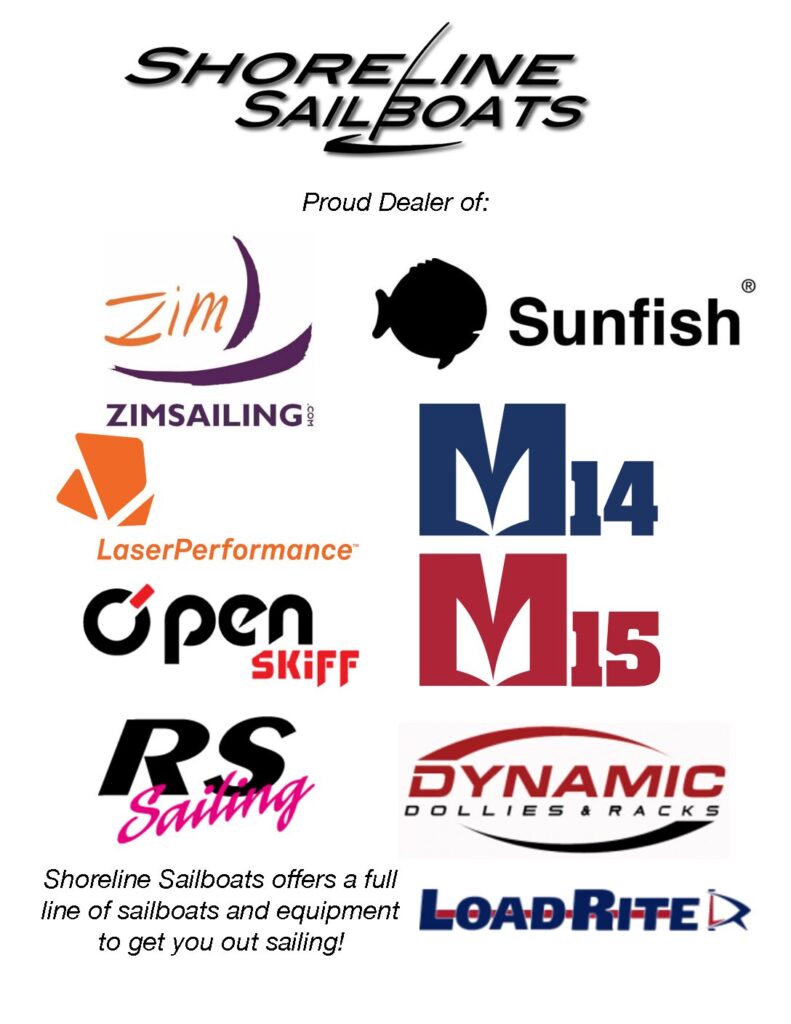
THE MELGES 15!
THE ROCKET! Built in the USA
SUNFISH – SAIL A CLASSIC!
Recent Posts

Hours & Info
Search products.
Contact us:
Any questions about the sailboats we sell, or the services we provide? We’re always eager to talk sailing and would enjoy helping you with any of your sailing needs. Contact Us
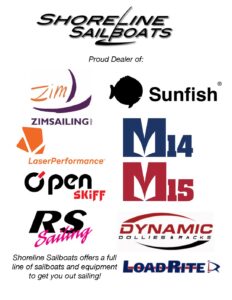
Designed by WPZOOM
Laser Sailboat: Mastering Performance and Techniques for Success
The Laser sailboat is a popular single-handed, one-design sailing dinghy known for its simplicity and performance. Designed by Ian Bruce and Bruce Kirby in 1970, the Laser has become the world's most popular adult and youth sailboat, with over 225,000 boats in 140 countries.

The boat's versatility is a significant contributing factor to its popularity, as it can be customized for different sailors and conditions using three interchangeable rigs of different sail areas.
Laser sailboats offer both beginners and experienced sailors the joy of sailing with their user-friendly design and competitive performance capabilities .
With a strong focus on sustainability, LaserPerformance, the leading producer of Laser sailboats, actively works to minimize the environmental impact of their products through ethical sourcing and manufacturing practices.

Key Takeaways
- Laser sailboats are known for versatility, simplicity, and high-performance capabilities.
- Designed in 1970, they have become the world's most popular sailboat for both adult and youth sailors.
- LaserPerformance is committed to sustainability through ethical sourcing and manufacturing practices.
History and Development
Inception of the Laser Sailboat
The Laser sailboat, an internationally popular one-design class, was conceived in 1969 by Bruce Kirby , a Canadian designer and former Olympian. He aimed to create an innovative design that was simple, affordable, and easy to sail.
The prototype, originally called the "Weekender," was first introduced to the public in 1971 at the New York Boat Show . Its inaugural sail featured the insignia "TGIF," a reference to its early name.
The boat's simplicity and performance attracted sailors of all skill levels, and by the early 1970s, it had become a commercial success.
Laser Class Evolution
The International Laser Class Association (ILCA) was established in response to the growing popularity of this sailboat. The ILCA sought to standardize the Laser's various specifications and ensure consistency across all boats.
One of its key contributions has been the establishment of three interchangeable rigs: Standard, Radial, and 4.7 , which cater to different wind strengths and crew weights.
This adaptability has made the Laser more accessible and appealing to a broader range of sailors.
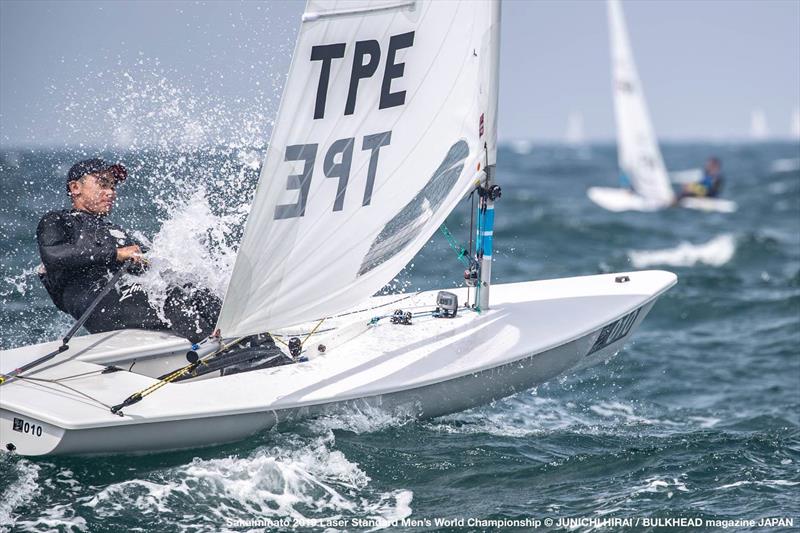
The Laser's rise as an international class was further solidified when it became an Olympic class in 1996. The boat's simplicity, strict one-design nature, and large worldwide fleet have made it a staple of the Olympic sailing program.
Its design has remained relatively unchanged since its inception, with only minor modifications being made to improve performance and durability .
The Laser remains a popular choice for sailors globally, both competitive and recreational. Its unique combination of simplicity, adaptability, and performance has ensured its continued success as a one-design class, and the International Laser Class Association continues to play a crucial role in maintaining the consistency of the boat and promoting the sport of sailing around the world.
Laser Sailboat Specifications
Hull Design and Construction
The Laser sailboat is known for its simplicity and performance which was designed in 1970 by Ian Bruce and Bruce Kirby. The hull design contributes to its stability and speed in the water.
Its construction uses a lightweight hull, ensuring optimal handling for sailors of various skill levels. This sailboat has been designed with durability and stability in mind.
Its materials and construction techniques focus on withstanding the rigors of sailing while maintaining a consistent and smooth ride on the water.
Rigging Variants
There are three interchangeable rigging variants for the Laser sailboat, each offering different sail areas to accommodate sailor weight and wind strength. These variants include:
- Laser 4.7 : With a sail area of 4.7 square meters, this rig is suitable for youth and lighter female sailors. It is considered the smallest and most accessible rig for Laser sailing. More information about Laser 4.7.
- Laser Radial : This rig offers a 5.1 square meter sail area, suited for women and lighter sailors seeking a more challenging sail size. Learn about Laser Radial.
- Laser Standard (ILCA 7) : The most common and originally designed rig using a 7.1 square meter sail, also known as MK2 , features a larger sail area suitable for heavier and more athletic sailors. Details on Laser Standard sail and rig.
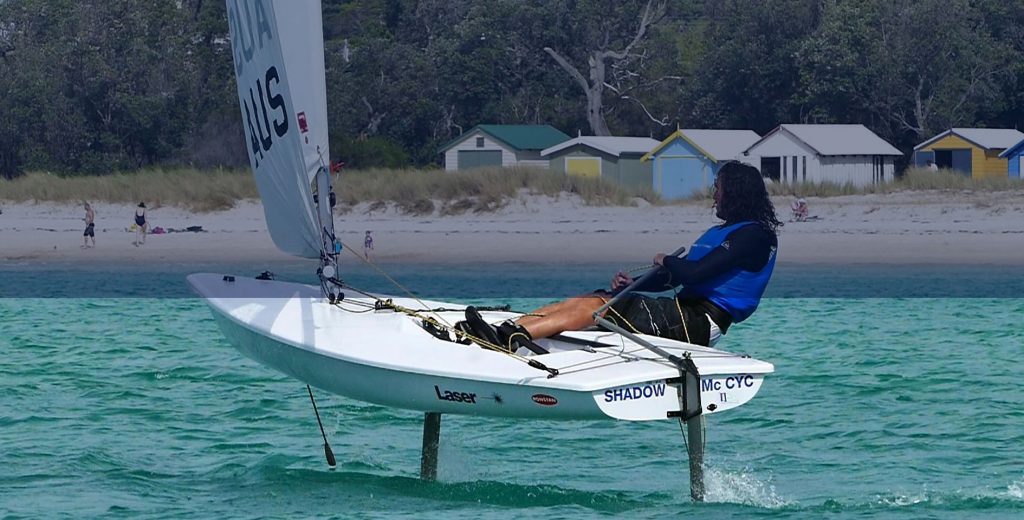
Dimensions and Sail Measurements
The Laser sailboat has specific dimensions and sail measurements which contribute to its design and performance. Here are the key dimensions:
- LOA (Length Overall): 4.2 meters
- LWL (Length at Waterline): 3.81 meters
- Beam : 1.39 meters
- Draft : 0.787 meters
- Weight : Standard 58.97 kg (130 lbs)
The sail measurements for the three different rigging variants are as follows:
| Rig Variant | Sail Area (sqm) |
|---|---|
| Laser 4.7 | 4.7 |
| Laser Radial | 5.1 |
| Laser Standard | 7.1 |
These specifications ensure consistent performance and ease of handling for sailors in various conditions and preferences.
Sailing Dynamics and Performance
Handling and Maneuverability
The Laser sailboat is known for its excellent handling and maneuverability, making it suitable for sailors of all skill levels.
Its simplified rigging and straightforward design allow for easy control and quick response to changes in wind and water conditions.
The Laser's hull weight is only 120 pounds (54.43 kg), contributing to its nimbleness on the water.
Steering the Laser sailboat is mostly dependent on the sailor's body positioning and sail trimming techniques, giving more room for tactical excellence. Due to its responsive nature, the Laser rewards sailors who can make quick adjustments and maintain an optimal sail trim.
Speed and Stability
The Laser sailboat offers a good balance of speed and stability for both recreational and competitive sailing.
Its relatively simple design, combined with a large sail area of 75 square feet (6.97 square meters) , enables it to reach impressive speeds for its size while maintaining stability.
Key factors affecting the Laser's speed and stability include:
- Hull design: The Laser's hull is designed to reduce drag and enhance stability, providing a fast and steady sailing experience.
- Sail size and shape: The Laser's sail is optimized for various wind conditions, allowing it to perform well in both light and strong winds.
- Sailor's weight and athleticism: The speed and stability of a Laser sailboat are also influenced by the sailor's weight and athleticism. An optimal weight range for Laser sailors is 140 to 190 pounds (64 to 86 kg) , and experienced, athletic sailors can better handle the boat in challenging conditions.
Sailor Interaction
A significant aspect of the Laser sailboat's performance is the level of interaction between the sailor and the boat.
As mentioned earlier, the Laser rewards sailors who possess excellent steering and trimming techniques, as well as a strong sense of tactical awareness.
This interaction allows the Laser to perform at its best under various conditions.
Sailors can further optimize their Laser sailboat's performance by:
- Adjusting the sail's angle and position to match wind conditions
- Proper body positioning and weight distribution
- Adopting efficient upwind and downwind sailing techniques
- Maintaining focus and awareness of wind shifts and changes in water conditions
Types of Laser Sailboats
Laser sailboats are a type of one-design dinghies, which means that they follow strict design and manufacturing rules to ensure all boats in the Laser class are identical.
The versatile laser class is widely popular as they offer different sail and rig sizes, catering to sailors of various ages, weights, and skill levels.
Laser Standard
The Laser Standard , also known as the ILCA 7 , is the largest of the three laser rigs. This adult racing class boat features a 7.1 sqm sail, making it suitable for heavier and more athletic sailors.
Laser Radial
The Laser Radial or ILCA 6 has a smaller 5.1 sqm sail. It is specifically tailored to lighter sailors, including women and youth sailors. The Radial's sail allows for better control and easier handling in various wind conditions.
This provides a level playing field for a wide range of sailors in terms of age, weight, and experience level.
Lastly, the Laser 4.7 or ILCA 4 features the smallest sail, measuring 4.7 sqm. This rig is designed for young sailors who are new to Laser sailing and need a more manageable sail size. The unique 4.7 lower mast section includes a pre-bend near the boom fitting, which allows the sail to depower more easily.
This provides a more forgiving experience for new and younger sailors.
Each Laser sailboat variant utilizes the same hull design, ensuring that the core sailing experience remains consistent across the board. This enables sailors to transition seamlessly between the different rig sizes as they progress in their sailing abilities.
Competitive Sailing
Racing and Regattas
The Laser sailboat has been a popular choice in the sailing community for competitive racing due to its simplicity and one-design class. The Laser Class Association organizes races and regattas in various formats where sailors adhere to the class rules.
The laser class has three different sail sizes - Laser Standard (ILCA 7), Laser Radial (ILCA 6), and Laser 4.7 (ILCA 4). These cater to sailors of different ages, weights, and abilities to participate in a single class.
These characteristics make the Laser sailboat a widely sought-after option for sailors who are interested in competitive racing 1 .
Olympic Presence
The laser class has a strong presence in the Olympics, being recognized as an Olympic class sailing dinghy. Laser Standard (ILCA 7) and Laser Radial (ILCA 6) are the two divisions that have been part of the Olympic Games since 1996 and 2008, respectively.
With its universal appeal and the level playing field it offers to sailors, the laser class has grown significantly in popularity over the years. It has achieved global recognition as a highly competitive sailing class in the Olympic Games.
National and International Championships
Alongside racing, regattas and their Olympic presence, the Laser Class Association also organizes various national and international championships.
Among these events are the ILCA 4 Youth World Championship, scheduled to happen in Viana do Castelo, Portugal, in June 2024 2 .
The World Championships typically attract top sailors from different nations, competing for the title of world champion.
A list of major championships for laser sailing includes:
- ILCA 4 Youth World Championship
- ILCA 6 World Championship
- ILCA 7 World Championship
In addition to these flagship events, many national championships are also held regularly by various Laser Class Associations around the world. This fosters the growth of talented sailors and promotes the spirit of competition within the laser sailing community.
Maintenance and Upkeep
Routine Care and Maintenance
Laser sailboats are known for their durability, but regular maintenance is essential to ensure their longevity and maintain resale value.
Inspect the hull and foils for any damage or signs of wear. Also, check the steering systems, such as rudder and tiller, ensuring they are functioning smoothly without any wiggles.
Regularly inspect tiller extension fittings for cracking and signs of potential breakage.
Cleaning your sailboat after each use will help minimize the chance of damage from dirt, salt, and debris. Store sails, lines, and other equipment properly to avoid moisture damage, mold, and mildew growth.
Verifying the functionality of the autobailer should also be a part of the routine maintenance process.
Transport and Storage
Transporting a Laser sailboat can be done with relative ease, as they are lightweight and their compact size allows for cartop transport.
When cartopping your Laser, use appropriate padding and straps to secure the boat without causing damage to the hull, mast, or other components.
As for storage, it is essential to keep your Laser sailboat in a covered and well-ventilated area, preferably on a dolly or custom cradle that supports the gunwales to prevent unnecessary stress on the hull.
Moreover, ensure the mast and other equipment are safely stored alongside the boat.
Periodically inspect the boat during storage to check for any signs of damage, moisture buildup, or rodent infestation.
Laser Sailboat Community and Culture
The Laser sailboat has built a strong sense of community that extends across different countries. This community primarily revolves around clubs, associations, and social and recreational sailing.
Clubs and Associations
A significant part of the Laser sailing community is the involvement in clubs and associations at various levels. The International Laser Class Association (ILCA) is the governing body that brings together Laser sailors from all around the world.
This association is responsible for maintaining the one-design principles, organizing international events, and promoting Laser sailing as a high-quality, competitive sport.
At a local level, numerous clubs are home to passionate Laser sailors. Club racing is a popular form of competition within the community, offering a friendly yet competitive environment for sailors to test their skills.
There are also regional associations supporting the growth of the Laser sailing community in their respective areas.
Example of Laser clubs:
- Family Fun Sailing Club : Focused on promoting sailing for the whole family and organizing social events.
- Weekender Club : Emphasizes weekend gatherings and collaborative sailing initiatives.
- TGIF Racing Club : Prioritizes Friday evening club races for those looking to engage in competitive sailing after work.
Social and Recreational Sailing
The Laser sailboat's appeal extends beyond competitive racing, with many enthusiasts enjoying the boat for its simplicity and versatility in social and recreational sailing.
The Laser community is known for organizing events that cater to various interests and skill levels, ensuring that everyone has a chance to find their niche.
Some common social and recreational sailing events include:
- Casual group sails : Informal gatherings where sailors can share tips, learn from one another, and enjoy sailing in a relaxed and social environment.
- Adventure sails : Excursions to explore new sailing locations or participate in long-distance trips.
- Family fun days : Sailing events focusing on family-oriented activities, making the sport accessible and enjoyable for all ages.
Frequently Asked Questions
What factors determine the price of a Laser sailboat?
When looking for a Laser sailboat, various factors such as brand, condition, materials used, size, and additional features all play a role in determining the price .
A brand-new Laser will typically cost more than its used counterpart. Higher quality materials and improved technology can also increase the price, as well as customizable options and additional accessories.
To find the right Laser sailboat at a competitive price , it's essential to compare offerings from various vendors and take time to evaluate factors like reputation and warranty. Sailing Chandlery provides more information on Laser sailboats and their prices.
What are the essential specifications to look for in a Laser sailboat?
When considering a Laser sailboat, pay attention to details like hull weight , rig size, sail size, and weight capacity , as these will affect the boat's performance and suitability for the intended use.
A standard Laser sailboat generally has a hull weight of 125 lbs or 56.7 kg , with different sail sizes available, such as ILCA 4 (Laser 4.7), ILCA 6 (Laser Radial), and ILCA 7 (Laser Standard).
Each sail size is designed for sailors within specific weight ranges, providing the best performance and stability.
How can I find a reputable vendor for Laser sailboat kits?
To find a reputable vendor for Laser sailboat kits, research different suppliers, seek recommendations from fellow sailors, and read reviews from previous customers.
Online platforms like West Coast Sailing offer resources and information on Laser sailboats, including detailed guides, FAQs, and where to find quality suppliers.
What is the recommended weight capacity of a standard Laser sailboat?
The recommended weight capacity for a Laser sailboat varies depending on the rig size.
The ILCA 6 (Laser Radial) is suitable for sailors between 60 kg and 75 kg , while the ILCA 7 (Laser Standard) is better suited for sailors weighing 75 kg to over 90 kg.
The ILCA 4 (Laser 4.7) is designed for younger and lighter sailors. When choosing a Laser sailboat, ensure that the rig size matches the intended user's weight range for optimal performance.
What are the characteristics that define the best Laser sailboats on the market?
The best Laser sailboats on the market offer a combination of durability, performance, and ease of use.
Look for models with robust construction. They are made from high-quality materials to withstand harsh sailing conditions.
Additionally, seek sailboats with easy-to-use rigging systems and low-maintenance designs.
Also, make sure they have support from reputable manufacturers. This ensures they meet strict class specifications.
Is sailing a Laser suitable for beginners and what are the challenges involved?
Sailing a Laser is generally suitable for beginners. These boats are known for their simplicity, ease of use, and responsive handling. However, beginners should be prepared for some challenges.
These challenges include mastering the correct body positioning and balance or adjusting to different wind and weather conditions. It's essential for new Laser sailors to familiarize themselves with the boat's assembly and rigging process and seek guidance from experienced sailors or trainers. This ensures a safe and enjoyable sailing experience.
Related Articles
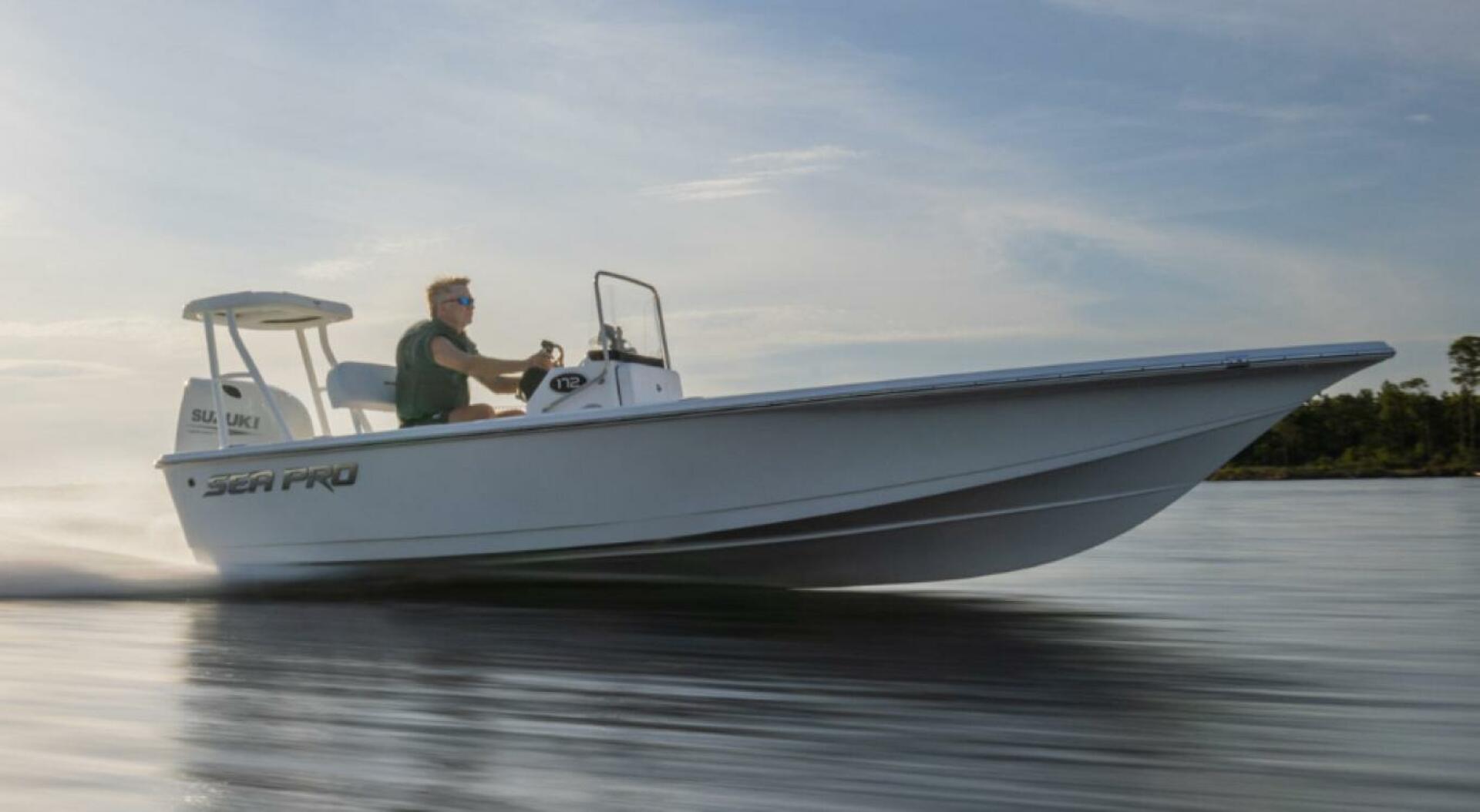
Top 10 Small Boats for Sale 2024: Expert Picks for Every Budget
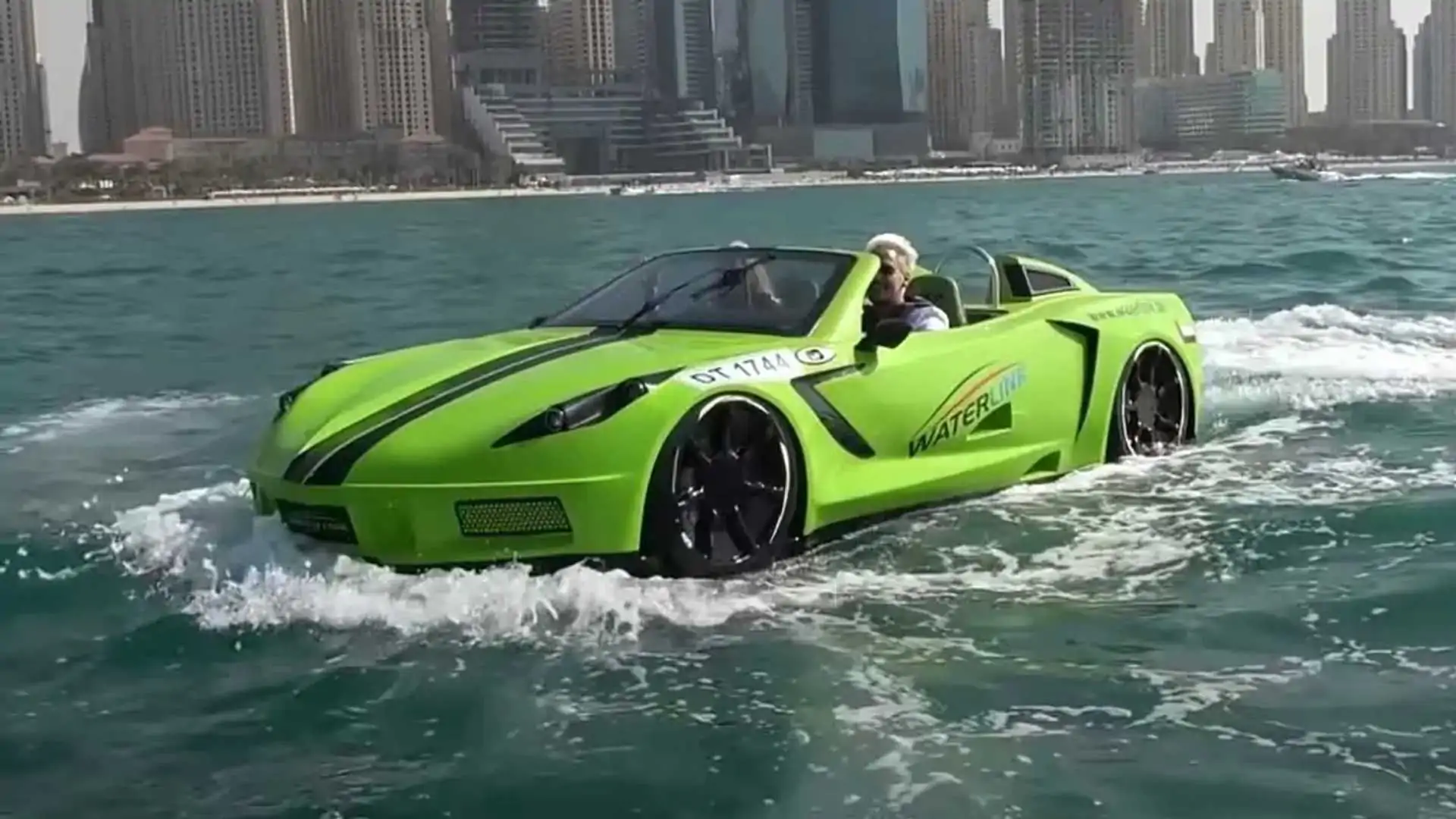
Corvette Boat: A Comprehensive Guide for Enthusiasts

Axopar Boats: Unrivaled Performance and Innovative Design

De Antonio Yachts: Exploring Luxury and Innovation on the Water
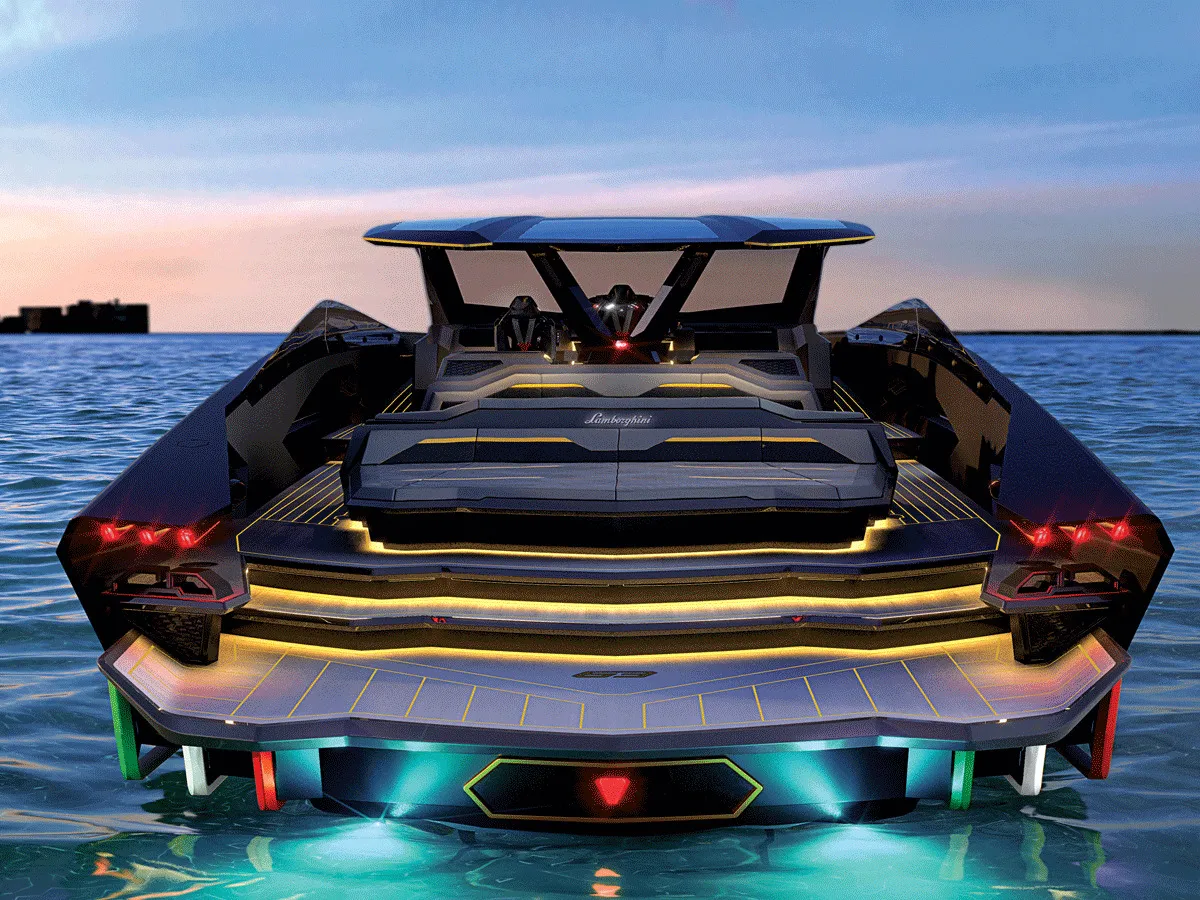
Lamborghini Yacht Price: Unveiling the Luxury Experience
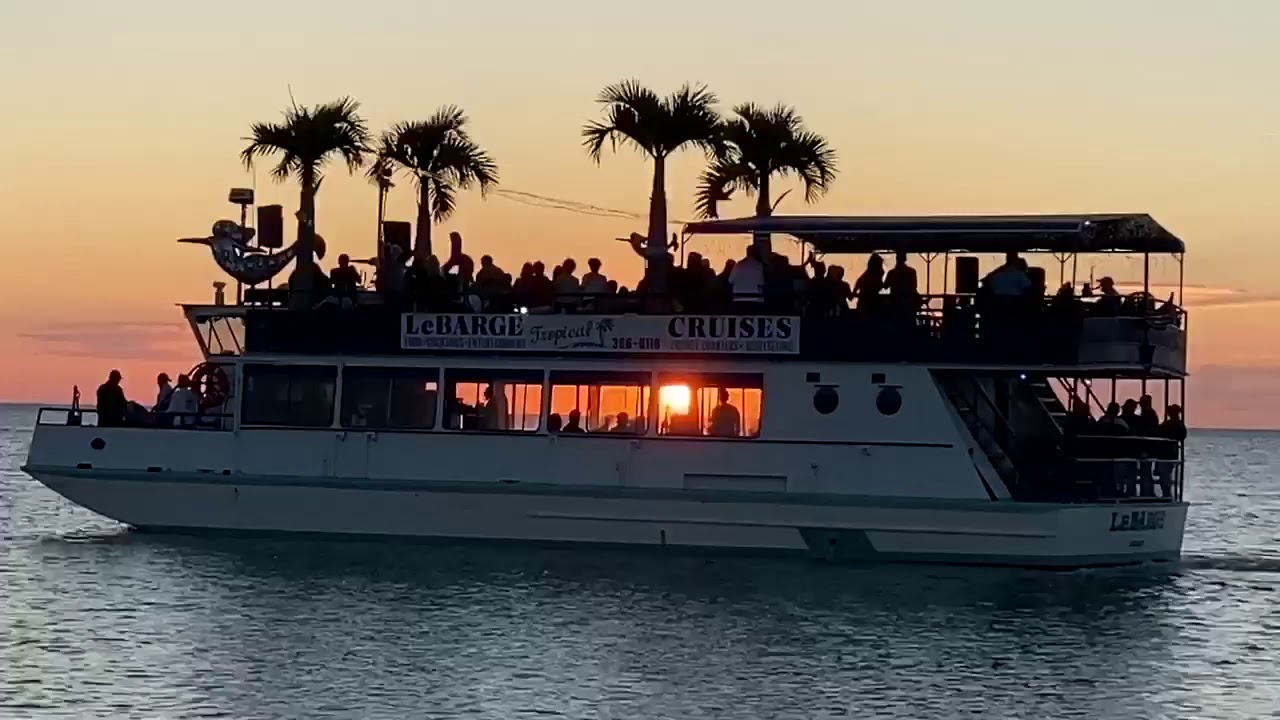
Dinner Cruise Sarasota: A Memorable Evening Experience

Ascend 10T Kayak: A Comprehensive Overview for Enthusiasts

West Palm Beach Boat Show 2024: Insider's Guide and Highlights
Your cart is empty
Have an account?
Log in to check out faster.
Best Sellers

ILCA (Laser) Sailing 101
What is the ilca (laser) class.
Note: In this article, the terms "Laser" and "ILCA" are going to be used interchangeably. Worldwide, the class is now officially known as the ILCA, despite originally being called the Laser .
The Laser class is a one design dinghy originally designed by Bruce Kirby and Ian Bruce in 1969. Although the original intent behind the design was a recreational, family-friendly boat, the Laser has gone on to become one of the most popular racing boats in the world, with over 220,000 produced.
What makes up a boat?
Being a one design and Olympic class, all Laser boats conform strictly to the Laser class rules. In order to compete at continental and international championships, you will need to ensure that your equipment is ILCA class certified, and complies with the measurement standards set out by the class. There is a number of non-class legal equipment available, and if you're just planning on sailing for fun, these are a great option for getting started. (Hint: google Intensity Sails)
A relatively lightweight hull for its size, the Laser is 4.23m long, has a beam of 1.42m and weights 57kg. All hulls are built from glass reinforced plastic (AKA fibreglass) and are known for their robust construction and light weight.
One of the unique features of the Laser class is the three different rigs which can all be used with the same hull. This allows sailors of different ages, weights and abilities to participate in a single class. The rigs are:
Laser Standard (ILCA 7)
Laser Radial (ILCA 6)
Laser 4.7 (ILCA 4)
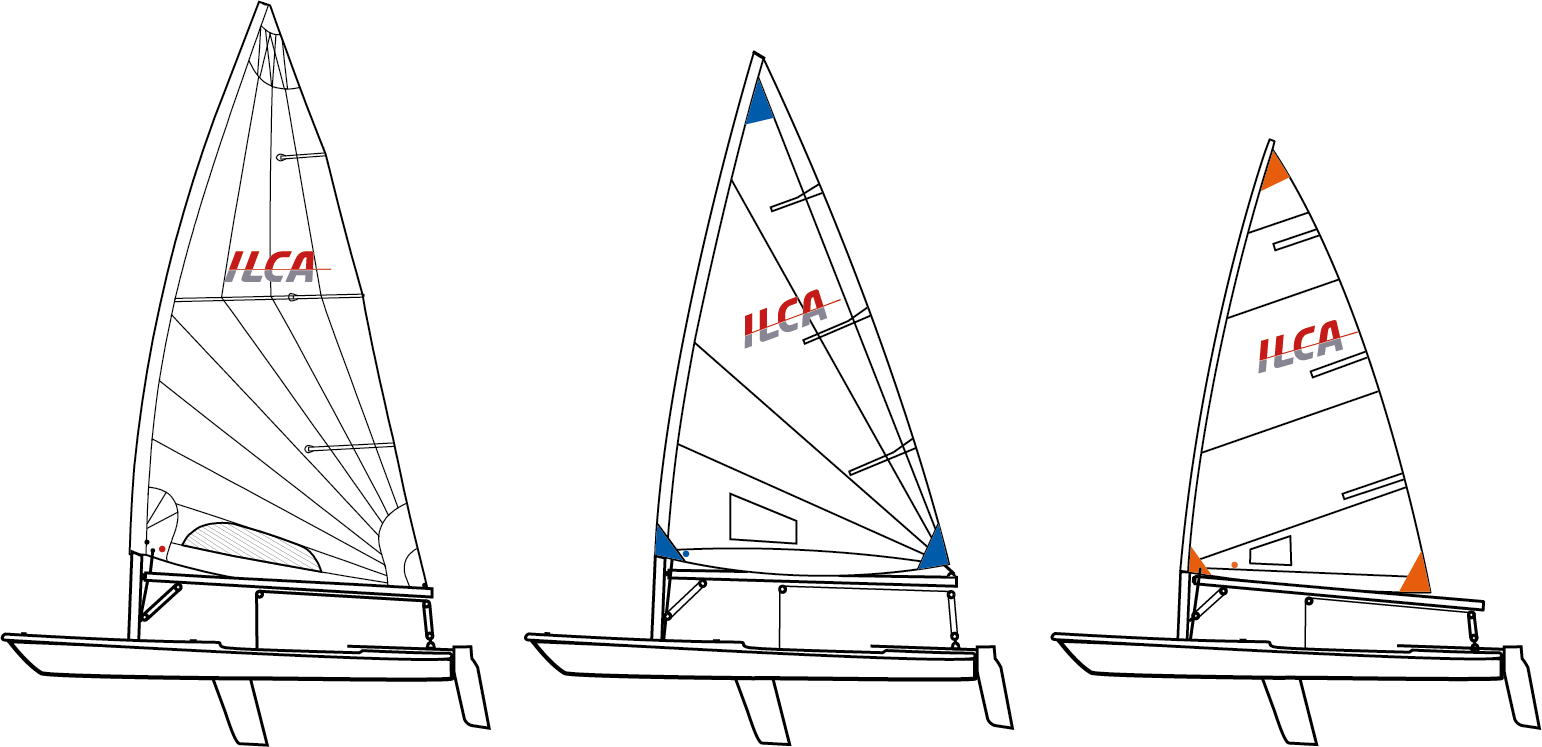
Masts/Spars
Each Laser rig consists of three pieces - the bottom mast, top mast and boom. The bottom mast is specific to each rig size, but the same top section and boom can be used with all three rigs.
Similar to the bottom mast sections, each Laser rig also has its own sail, and they are all different sizes.
Control Lines and Rigging
In the early 2000s, the class introduced the Turbo Kit rigging, which made a significant difference in the techniques and ease of sailing the boat. Although the Turbo rigging is standard nowadays, the old systems can still be found, and can be used to race.
One thing that many sailors like about the Laser is the speed and simplicity of its rigging. The boat has only four main control lines: the mainsheet, vang (kicker), cunningham and outhaul.
Similar to the hull, ILCA foils are also made from fibreglass. The centreboard (daggerboard) is inserted in to the case aft of the mast step, and the rudder clips easily on to the gudgeons on the transom of the hull.
Accessories
Launching trolley - unless you will be beaching (not recommended) or storing your boat on a dock, you will need a trolley to launch your boat. Most boats are sold with these.
Road Trailer - if you would like to sail at different venues, or compete away from home, one of the easiest ways to transport your boat is with a road trailer. The Laser was originally designed to be loaded on to the roof of a car, and if you would like to find out more about transportation methods, we have a full article here .
Tiller and Extension - these come in both aluminium and carbon varieties, and both can be used to race.
Clothing - you can wear anything while sailing the Laser, but I would recommend getting at least a life jacket (better safe than sorry), and a pair of hiking pants. Hiking pants will protect the back of your legs from the deck, and allow you to sail for longer.
Who Can Sail the Laser?
Another great things to mention about the Laser is the range of uses and abilities the boat caters to. Lasers can be sailed on the weekend with your family for fun, or raced in the Olympics and everything in between!
What is the optimal weight for the Laser?
Thanks to the three rig sizes in the Laser class, the weight range in the Laser is quite large. Generally, the Laser Radial (ILCA 6) is suitable for sailors between 60kg and 75kg while the Laser Standard (ILCA 7) is suitable for sailors 75kg to over 90kg. The Laser 4.7 (ILCA 4) is designed specifically for younger and lighter sailors with an optimal weight range between 45kg - 60kg.
What ages are the sailors?
Laser sailing is a sport you can do for life, and nearly every Laser regatta there will be an age category catering to everyone from junior sailors through to master ages. Generally the age categories are U19, Open (20-35), and Masters (over 35). Depending on the regatta, there may also be additional age divisions including U17, and U15. It’s never too late to start sailing a Laser!
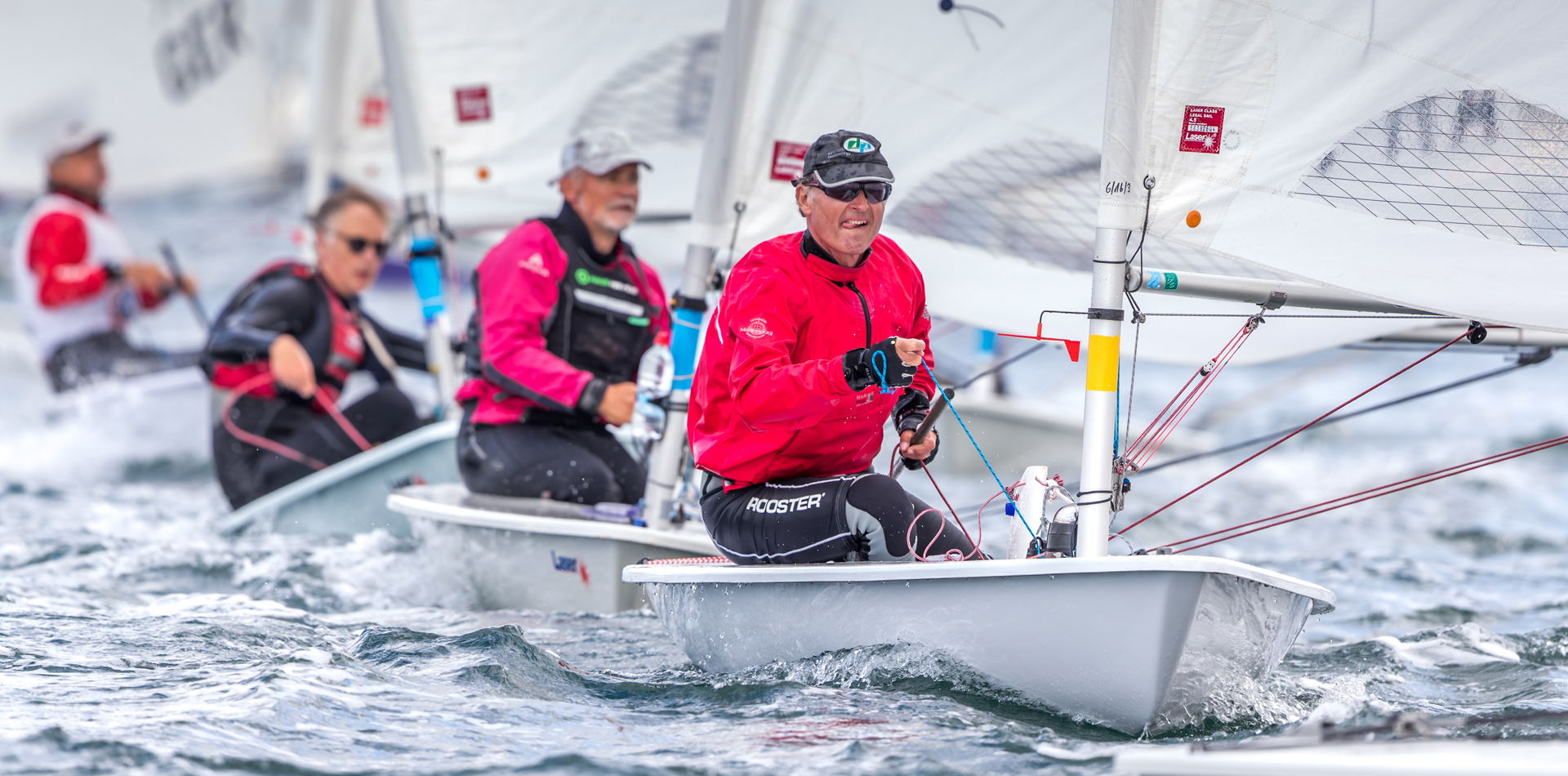
Where to Sail a Laser?
The Laser world is divided in to 6 different regions:
North America
Central and South America
Rest of World
with each region comprising of various member countries and districts. Being the most popular dinghy class in the world, there are Lasers in over 120 countries around the world, and it's likely there is a sailing club with at least one boat near you. For more information and contact details for an association in your country, ILCA have a directory of ILCA District Contacts .

Laser Racing
Since the inception of the class, the Laser has been considered one of the world's premiere racing classes thanks to its low-cost, availability and one design nature providing tight competition at all levels. Since 1996, Laser racing has been included at the Olympics, and many Olympic laser sailors have gone on to the pinnacles of high performance sailing. If you want to see the calibre of some of the sailors who have competed in the Laser, be sure to check out our ranking of the Top 10 Male Sailors and Top 10 Female Sailors of all time.

Outside of the Olympics, the ILCA class also organises World Championships for all rigs and age divisions on a yearly basis. These include the following regattas:
Masters World Championship (all divisions and rigs)
U21 World Championship (ILCA 6 and ILCA 7)
ILCA 4 Youth World Championship
ILCA 6 Women's World Championship
ILCA 6 Youth World Championship
ILCA 6 Men's World Championship
ILCA 7 Men's World Championship.
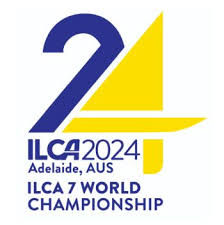
The full list and dates of upcoming ILCA World Championships can be found on the ILCA website .
Each ILCA region also hosts their own continental championships, and these also have a typically high attendance, and strong calibre of racing. The list of championships for each of the regions can be found here:
Oceania (out of date)
Starting Out with ILCA Sailing
If you're now feeling ready and excited to kick off your Laser journey, here's some things you might want to know before getting on the water
Getting a Boat
Due to their popularity, nearly every sailing club around the world will have at least one Laser lying around which you could try out before you buy your own boat. Many clubs also have rental programs where you can borrow or lease their boats for a minimal cost. This is a great way to get started and see if you enjoy the class.
If however, you're already at the point where you want to get your own boat, there will also be plenty of second hand boats which you could consider upgrading to. If you want some advice on looking for a used Laser, we have a complete second hand Laser Buyer's Guide .
Alternatively, I may have done such a good job convincing you to start ILCA sailing that you're ready to throw yourself in to it headfirst and buy a new boat. If that's the case, contact me at daniel.self@sail27 .com and I can help you find the best boat for you, or connect you with a great Laser dealer in your area.
Training and Coaching
Regardless of your ability, getting a coach is going to help you improve your sailing and much faster than you would by yourself. There are plenty of ILCA coaches all around the world, and the best resource I have found for finding a coach is ILCA's Coach directory . Another great option is to talk to your local sailing club or ILCA district association - they're sure to know someone in your area who can help you get started in the class.
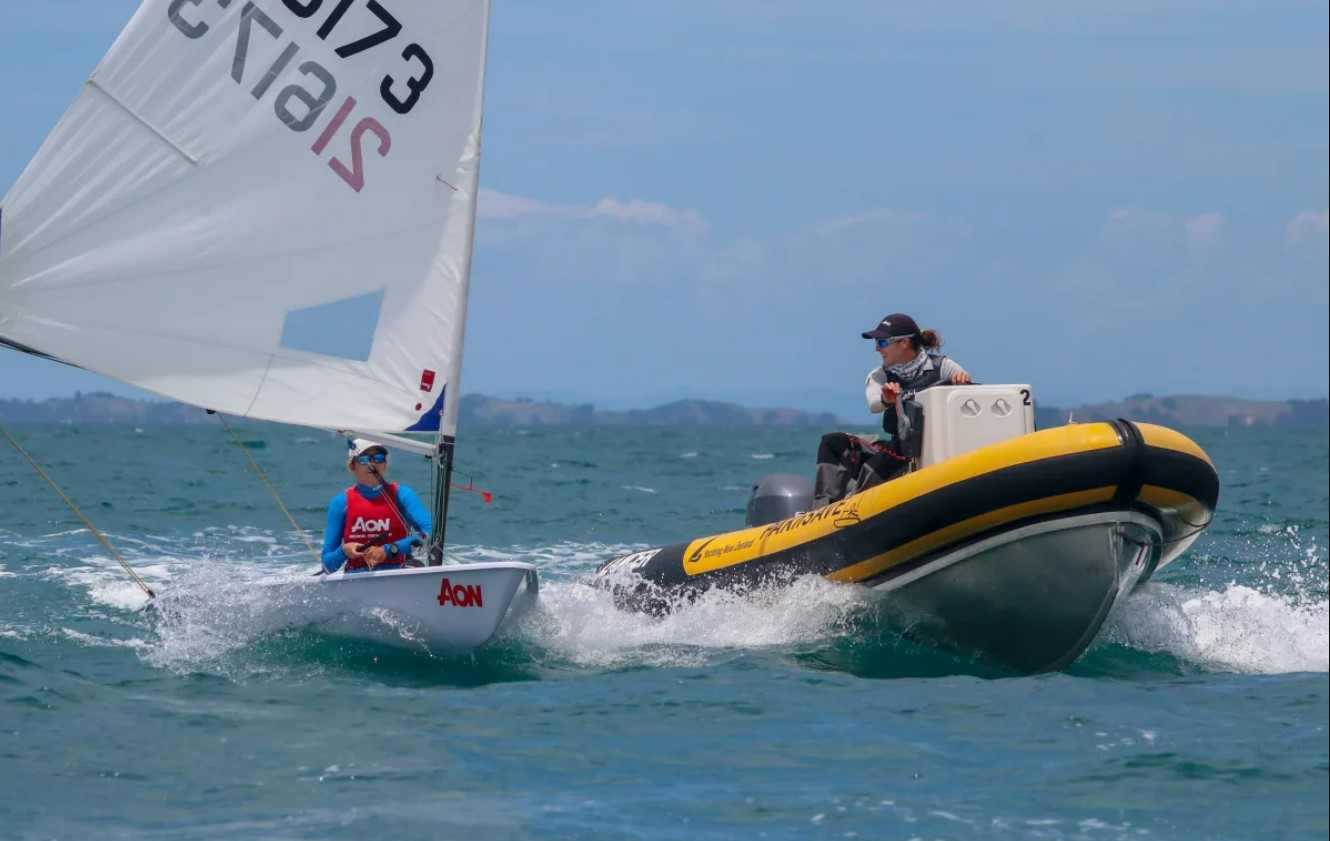
Since the COVID pandemic, online Laser coaching has become more accessible, and the guys at the International Sailing Academy have some great courses which can help you get from an intermediate to advanced Laser sailor.
You may however still be more of a 'book person' (that's how I started as well). If that's the case, I would recommend the RYA Laser Handbook. Although its a little older now, this is the most comprehensive guide to Laser sailing that I've read. Even as I got further in to my sailing journey, I would often refer back to this book for new tips.
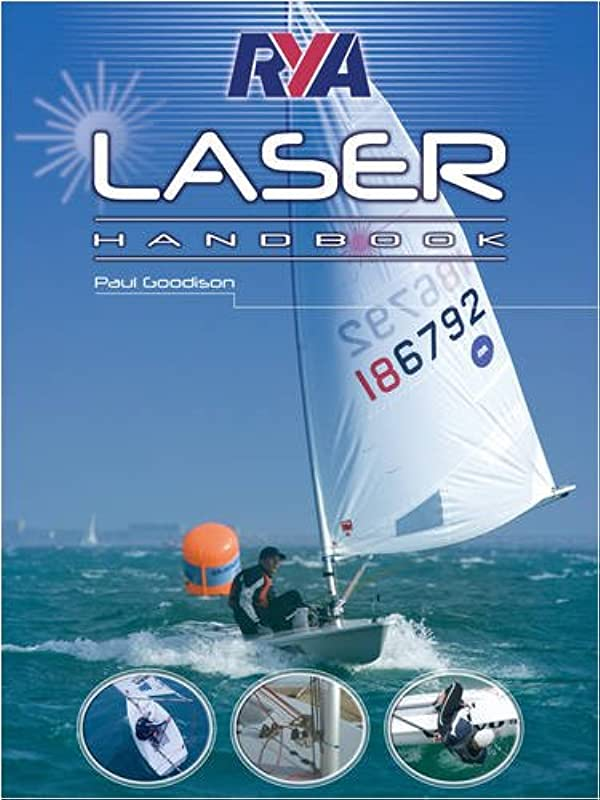
Wrapping Up
With all of that information, you should now be well versed on the ILCA class, and how you can get started in it. If you need any further information, feel free to comment below and I'll try to answer as well as possible. Otherwise, happy sailing and I'll see you on the water sometime soon!
Leave a comment
Please note, comments need to be approved before they are published.
- Choosing a selection results in a full page refresh.
- Opens in a new window.
Great choice! Your favorites are temporarily saved for this session. Sign in to save them permanently, access them on any device, and receive relevant alerts.
- Sailboat Guide
Laser Radial
Laser Radial is a 13 ′ 8 ″ / 4.2 m monohull sailboat designed by Bruce Kirby and built by Laserperformance.com starting in 1982.
Rig and Sails
Auxilary power, accomodations, calculations.
The theoretical maximum speed that a displacement hull can move efficiently through the water is determined by it's waterline length and displacement. It may be unable to reach this speed if the boat is underpowered or heavily loaded, though it may exceed this speed given enough power. Read more.
Classic hull speed formula:
Hull Speed = 1.34 x √LWL
Max Speed/Length ratio = 8.26 ÷ Displacement/Length ratio .311 Hull Speed = Max Speed/Length ratio x √LWL
Sail Area / Displacement Ratio
A measure of the power of the sails relative to the weight of the boat. The higher the number, the higher the performance, but the harder the boat will be to handle. This ratio is a "non-dimensional" value that facilitates comparisons between boats of different types and sizes. Read more.
SA/D = SA ÷ (D ÷ 64) 2/3
- SA : Sail area in square feet, derived by adding the mainsail area to 100% of the foretriangle area (the lateral area above the deck between the mast and the forestay).
- D : Displacement in pounds.
Ballast / Displacement Ratio
A measure of the stability of a boat's hull that suggests how well a monohull will stand up to its sails. The ballast displacement ratio indicates how much of the weight of a boat is placed for maximum stability against capsizing and is an indicator of stiffness and resistance to capsize.
Ballast / Displacement * 100
Displacement / Length Ratio
A measure of the weight of the boat relative to it's length at the waterline. The higher a boat’s D/L ratio, the more easily it will carry a load and the more comfortable its motion will be. The lower a boat's ratio is, the less power it takes to drive the boat to its nominal hull speed or beyond. Read more.
D/L = (D ÷ 2240) ÷ (0.01 x LWL)³
- D: Displacement of the boat in pounds.
- LWL: Waterline length in feet
Comfort Ratio
This ratio assess how quickly and abruptly a boat’s hull reacts to waves in a significant seaway, these being the elements of a boat’s motion most likely to cause seasickness. Read more.
Comfort ratio = D ÷ (.65 x (.7 LWL + .3 LOA) x Beam 1.33 )
- D: Displacement of the boat in pounds
- LOA: Length overall in feet
- Beam: Width of boat at the widest point in feet
Capsize Screening Formula
This formula attempts to indicate whether a given boat might be too wide and light to readily right itself after being overturned in extreme conditions. Read more.
CSV = Beam ÷ ³√(D / 64)
Same hull as the LASER but with a smaller sail for lighter sailors. (less than 150 lbs.) Selected for use in Olympic women’s single-handed sailing event beginning in 2004.
Embed this page on your own website by copying and pasting this code.
Discover Related Sailboats

Laser (International)
- About Sailboat Guide
©2024 Sea Time Tech, LLC
This site is protected by reCAPTCHA and the Google Privacy Policy and Terms of Service apply.
Fast Dispatch, Fast Delivery and a 5 Star Rated Service

- MENS SAILING CLOTHING
- DYNEEMA TRAPEZE LINES AND ROPES
- SINGLE SHEAVE BLOCKS
- Gelcoat Fillers
- Dry Lubricants
- Adhesive Glues
- Hooks & Clips
- Catamaran Launching Trollies
- Jockey Wheels
- Hitch Locks
- Lighting Board
- Breakaway Cables
- Clew Straps
- Upper Masts
- Lower Masts
- Rope Thimbles
- Wind Indicators & Burgees
- Parrel Beads
- Whipping Twine
- Sailmakers Palm
- Digital Compasses
- DEVOTI ILCA
- LASER SAIL BOATS & DINGHYS
- BAHIA SAIL BOATS & DINGHYS
- Numbers & Letters
- Dinghy Covers
- Under Covers
- Catamaran Covers
- Single Handed
- Double Handed
- 18 Foot Skiff
- Exocet Moth
- Musto Skiff
- Dart 15/ Sprint 15
- Hurricane 5.9
- Laser Bahia
- Laser Cascais
- Laser Funboat
- Laser Stratos
Your Cart is Empty
- £0.00 Subtotal
Tax included and shipping calculated at checkout
Order before midday Monday to Friday and we will ship your order the same day.
- 01268 222912
- Accessories
- Laser Products
- Sails & Covers
- Rope Lengths
- Parts By Boat
- Boat Care & Cleaning
- Splicing Tools
- Boat Covers
- Dinghy Rope Lengths
- Laser Rope Lengths
- RS Rope Lenghts
- Catamaran Rope Lengths
- Laser Performance
- Topper Sailboats
- Other Boats

Pay in 30 days or split over 3 months
- Mens Sailing Clothing
- Womens Sailing Clothing
- Junior Sailing Clothing
- Repair Kits
- Skiff Suits
- Life Jackets
- Trapeze Harnesses
- Buoyancy Aids
- Hiking Pads & Pants
- Hiking / Toe Straps
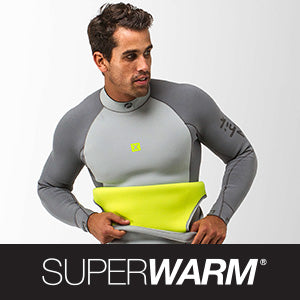
Zhik Superwarm
- 100m Rope Reel
- 50m Rope Reel
- Polyester Ropes
- Control Lines
- Double Braids
- Braid On Braid
- Anchor Lines & Ropes
- Spools & Reels
- Windsurfing
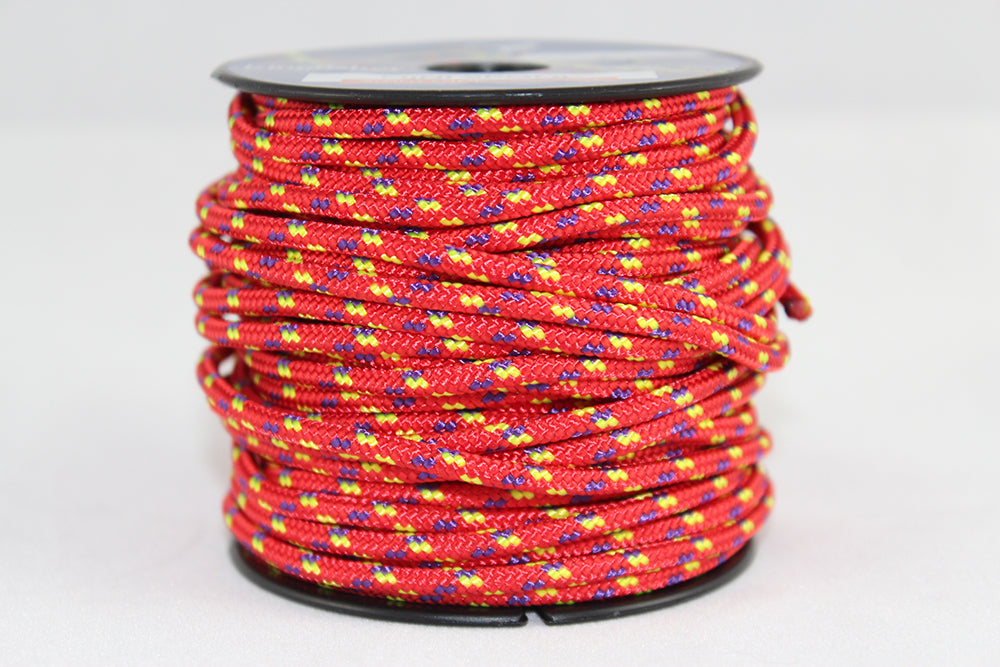
Mini Spools
- Single Block
- Double Block
- Triple Block
- Soft Attach
- Split Rings & Pins
- Inspection Hatches & Covers
- Bungs & Sockets
- Rudder & Tiller Parts
- Bushes & Fairleads
- Marine Screws
- Penny Washers
- VHF Aerials & Antennas
- Marine Tapes
- Traveller Systems And Parts
- Traveller Blocks
- Pico Hull & Deck Fittings
- Hull & Deck Fittings
- Laser Boats
- Laser Sails
- Laser Sail Packages
- Laser Spars
- Laser Rig Packages
- Laser Foils
- Laser Hull & Deck Fittings
- Laser Ropes
- Laser Dinghy Covers
- Devoti ILCA Boats
- ILCA Sail Packages
- ILCA Rig Package
- Devoti D-Zero Boats
- Devoti D-Zero Parts
- Devoti KDK Boats
- ILCA Charter Boats
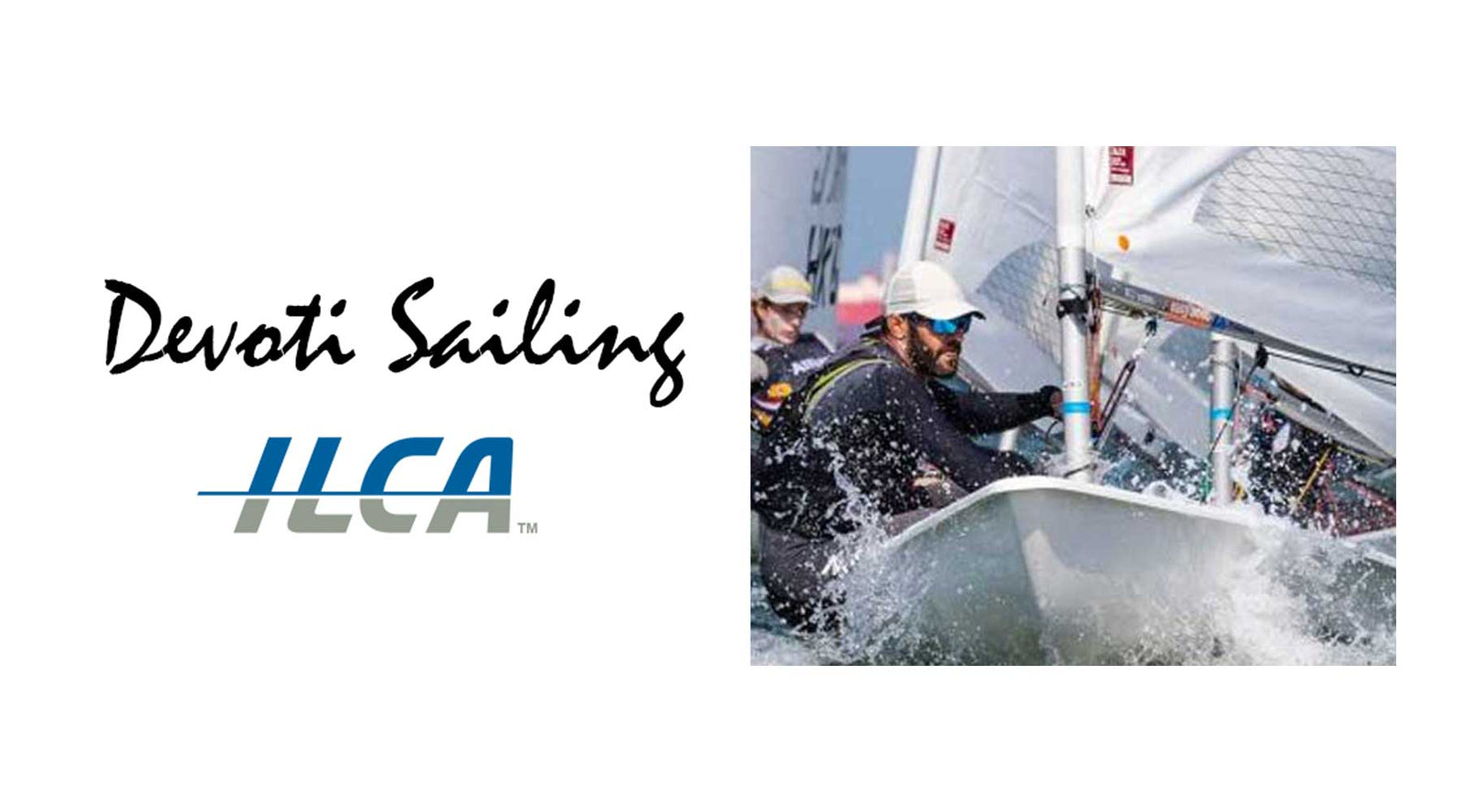
New Devoti ILCA
Search our chandlery

Laser Sails from Laser Performance
March 08, 2018 2 min read
Official Laser Sails at Sailing Chandlery
As an official Laser Performance Authorised dealer, Sailing Chandlery have a range of Laser sails in stock and ready to supply for a variety of sailing activities.
We appreciate that not everyone wants to be an Olympic Champion and the level of sailing will range massively across our customers. We're as much about supporting the weekend warrior as we are the professional sailor and are happy to provide advice on which Laser sail is best for you.
It's important to note, it's not only Laser sails we can supply, we also supply for the Laser Pico , Laser Bug , Laser Bahia , Dart 16 and many other boats in the Laser Performance range.
For the Laser 1 Laser Performance offer 3 types of sail for the Laser standard, Laser radial and Laser 4.7 boats.
- Official Class Legal Sails - you will need one of these if you are sailing in official class events - this sail includes the red button (class stamp)
- Class Compliant Sails - the sail is exactly the same as the official class legal sail but does not have the red button so cannot be used for class events. This sail is perfect if you want the same shape and material for training ahead of class events
- Training Sails - made out of a thinner dacron cloth to the same shape as the official sails - perfect for the weekend warrior who is club racing, training or attending cadet weeks and local events
Laser Standard Sails
Also known as the full rig the Laser standard sail is available in a MKI or MKII shape. The MKII is fast becoming the sail of choice.
- Class Legal Laser Standard MKII Sail - £540
- Class Compliant Laser Standard MKII Sail - £410
- Training Laser Standard MKII Sail - £219
- Laser MKII batten set - £47
Laser Radial Sails
- Class Legal Laser Radial Sail - £540
- Class Compliant Laser Radial Sail - £364
- Training Laser Radial Sail - £206
- Laser Radial batten set - £29.81
Laser 4.7 Sails
- Class Legal Laser 4.7 Sail - £420
- Class Compliant Laser 4.7 Sail - £333
- Training Laser 4.7 Sail - £195
- Laser 4.7 batten set - £29.81
You can see the full range of Laser sails on our website.
If you have any questions about the sails available or which is going to be the best for you then please do feel free to call us on 07793 953564.
Recent Articles
- Dinghy Rigging Service
- 8 Fantastic Features of the 2024 Zhik Superwarm X Sailing Wetsuit
- Devoti to Build the SB20 Keelboat
- Laser Pico vs Ocean Play Pico
- Testing the D-Zero from Devoti Sailing
- Summer Sailing Clothing Top Picks
- Rooster at Sailing Chandlery
- Gill Start of Season Sailing Kit Guide from Sailing Chandlery
- New From ZhIk in 2024 at Sailing Chandlery
- Harken 40mm Pulley Blocks At Sailing Chandlery
Let customers speak for us
Used 2 of these to replace the little plastic ones on a supernova tiller. Much better and now pull in the right direction
This is the perfect tool to assist in tightening my Dart Trampoline. It grips the rope far better than you can with your hands.
After having my Previous Superwarm X Suit for over 5 years whilst working as a watersports instructor this is a great improvement over the previous suit. Warmer and softer linning throughout the inside of the suit and I will continue to use the suit all year round like my old suit.
Someone at the club “borrowed “ one of my Solo’s bungs. I bought two so now I have a spare.
Great to have something that goes over everything if a quick solution is required
had ordered one on amazon before, received the wrong size received the correct size now :)
A simple moulded part of good quality, supplied quickly and well packed.
Turned out that I had ordered the wrong make, my camcleats being Allen not Harken, however by drilling the two fixings holes out by 1mm and filing two small notches they fitted perfectly.
Super helpful company. Attentive, and quick to deliver.
Second time I have use for this purpose. Really easy to attach to alloy mast and so easy and positive to operate.
We have put the boat on this trolley but not yet used it for launch and recovery. First impressions are very good, It fits together well and is super easy to assemble - it's made to put together and take apart fast if you want to put it in a vehicle etc. It is very lightweight which should be a boon launching and recovering the boat - at the same time it looks strong and well made. Being aluminium we won't have a rust problem either. I was impressed how it fits perfectly wherever it supports the boat. So assuming it performs well in use we are pleased we got this. Very helpful guy on the phone and it came quickly so all good, thanks,
Good service, and fast delivery. Very happy with my large amount of assorted short lengths of rope of many different thicknesses for practising my knots.
Good quality rope that can be spliced. Delivered promptly by the Sailing Chandlery.
Excellent sail, ideal for training and comes with a sailbag, Our only drawback was the long delivery time (2-3 weeks) and having to pay €90 in customs charges all due to Brexit! If Sailing Chandlery had a outlet here in the Republic or in Northern Ireland, business could get much better.
Worked a treat
The Puco hatches I bought hatch really well for hatchy things. Speedy service and great value. Hatch-on!
SIGN UP TO OUR NEWSLETTER
Save up to 40% on your next order.

The Laser is the world’s most popular adult racing class boat. True to box one design standards, each Laser in the world is identical ensuring the best sailor on the water wins the race, not the boat. The Laser is a challenging boat that rewards athleticism, subtle steering and trimming techniques, as well as the tactical excellence of the sailor. The Laser has been raced by young and old alike from the Club level all the way to the Olympics. It comes in 2 different hardware versions XD, for racers and the ones looking for a more thrilling sailing experience and the Race, more suitable for the leisure sailors and club racing. Each hardware version has 3 rig possibilities, the Standard , the Radial and the 4.7 for the heaviest/more athletic to the lighter and younger sailors.
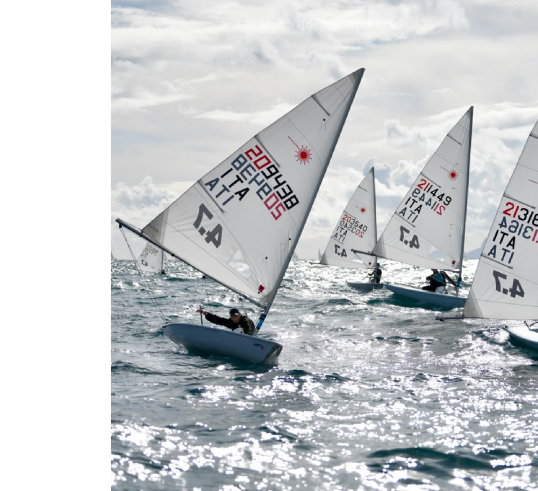
The world’s premier racing dinghy. The Weekender (name of the first prototype), with “TGIF” (Thank God It’s Friday) on the sail was designed in 1969 and quickly revolutionized the racing world with its speed and simplicity. It was called Laser in November 1970 and the production started the same year. It was launched at the New York Boat Show, its uniform design and affordable price attracted sailors and 144 Lasers were sold. Laser sails were identical due to modern laser cutting thus setting a standard for future racing classes. Today this timeless design is by far the most popular adult and youth racing boat worldwide. It is raced by many of the world’s top sailors and has been an Olympic class since 1996. The Laser’s full size rig rewards athleticism and is best for heavier, more experienced sailors, but it can easily be converted to a Radial or 4.7 by changing just the sail and bottom spar. When you race a Laser, one hull goes a long way. Just changing the lower mast and sail, you can convert any boat from Laser to Radial to 4.7. The advantage of this interchangeable formula is that you can easily switch boats as you become older, heavier or more experienced. Each rig helps you prepare for the next, so you get a step-by-step progression that can take you all the way from a beginning racer to World Champion!

The Laser has 2 hardware versions and 3 different rigs. Each uses exactly the same hull and foils, by lower mast and sail will make it suitable for a wide variety of sailors. This offers a unique step-by-step progression that makes it easy to switch models as a sailor change in age, ability or weight.
Two hardware versions to fulfill every sailor needs
- XD – For the ones looking for more performance – Carbon Fibre Upper Mast – Carbon Fibre Tiller and Extension – LaserPerformance Vang
- Race – For Recreational Sailing or Club Racing – Aluminium Upper Mast – Aluminium Tiller and Extension – Holt Vang
Three rig versions to suit every sailor
- Standard – 7.1sqm sail for heavier and more athletic sailors
- Radial – 5.1sqm sail for women, and lighter sailors
- 4.7 – 4.7sqm for youth and lighter females
The Laser is a true sailing phenomenon
With nearly 200,000 boats in 140 countries, it is clearly the world’s most popular adult and youth racing sailboat. Each year the Laser Class runs more races worldwide than any other class. And it’s still going strong! For almost four decades, the Laser has been a sailing success story. One reason is the boat’s sheer simplicity. From its very beginning, the Laser has offered an uncomplicated way for sailors to experience the joy of sailing and the thrill of competition. Many other qualities combine to make the Laser a legendary performer.
Effortless design
The Laser was created to get sailors on the water with minimal fuss. It has a lightweight hull that’s easy to carry and cartop. The two-part free-standing mast and sleeved sail make the boat easy to rig. And the simple layout means sailing is a breeze.
Strict One Design
The Laser is one design boat like no other. The class association is very strong and has strict class rules, so every Laser around the world is identical. This means races are won by sailing ability, not by equipment advantages.
Interchangeable formula
The Laser comes in three distinct models – the full-rig Laser, Laser Radial and Laser 4.7. Each uses exactly the same hull and equipment, except the sails and bottom spar can be changed to fit a wide variety of sailors. This offers a unique step-by-step progression that makes it easy to switch models as a sailor change in age, ability or weight.
Racing pedigree
Because Lasers are simple and identical, they provide exciting competition and a great chance to develop racing skills. Many of the world’s top sailors come through the Laser ranks, and both the Laser and Radial are current Olympic classes. No sailor is too inexperienced or too advanced to race a Laser. That’s why Lasers last a lifetime.
Superb value
The Laser’s simplicity, popularity and one design nature make it very economical. The Laser Class limits and controls go-fast extras, thus the boat will never be outdated, which explains why Lasers have such a high resale value. Whether it’s a local club race or the World Championships, every Laser has exactly the same chance of winning. And a young sailor can go all the way to the top of the sport in the same hull. That is Laser’s simple formula for success.
75.99 ft 2 7.06 m 2
13.78 FT 4.20 M
4.56 FT 1.39 M
2.62 FT 0.80 M
130 LB 58.97 KG
Beginner->Expert
Club->International
BOAT LIGHTNESS
TIME TO WATER
SKILL LEVEL

62 ft 2 5.76 m 2
13.78 FT 4.20M
50.59 ft 2 4.70 m 2
PARTS LOCATOR
RIGGING MANUAL
- Parts & Accessories
Privacy Overview
| Cookie | Duration | Description |
|---|---|---|
| cookielawinfo-checkbox-analytics | 11 months | This cookie is set by GDPR Cookie Consent plugin. The cookie is used to store the user consent for the cookies in the category "Analytics". |
| cookielawinfo-checkbox-functional | 11 months | The cookie is set by GDPR cookie consent to record the user consent for the cookies in the category "Functional". |
| cookielawinfo-checkbox-necessary | 11 months | This cookie is set by GDPR Cookie Consent plugin. The cookies is used to store the user consent for the cookies in the category "Necessary". |
| cookielawinfo-checkbox-others | 11 months | This cookie is set by GDPR Cookie Consent plugin. The cookie is used to store the user consent for the cookies in the category "Other. |
| cookielawinfo-checkbox-performance | 11 months | This cookie is set by GDPR Cookie Consent plugin. The cookie is used to store the user consent for the cookies in the category "Performance". |
| viewed_cookie_policy | 11 months | The cookie is set by the GDPR Cookie Consent plugin and is used to store whether or not user has consented to the use of cookies. It does not store any personal data. |











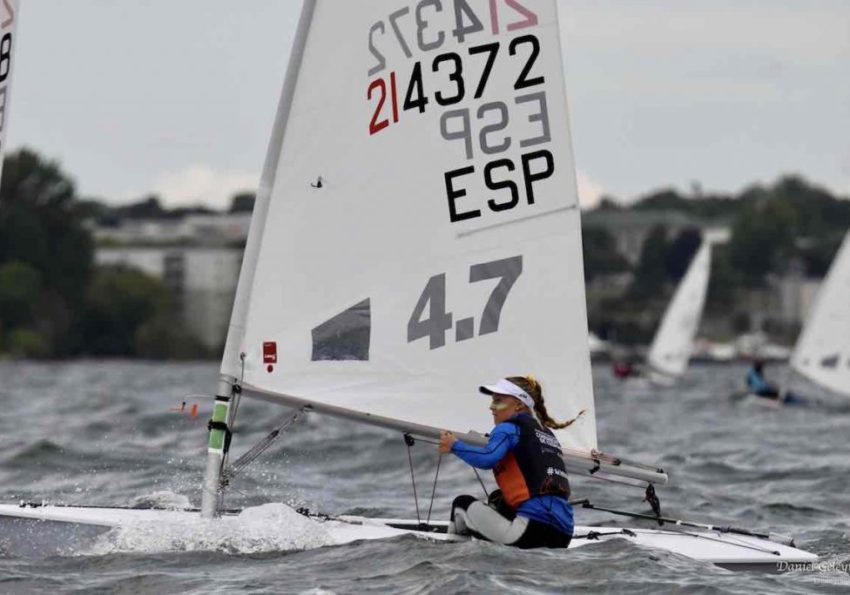
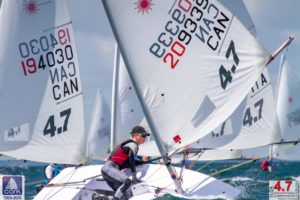








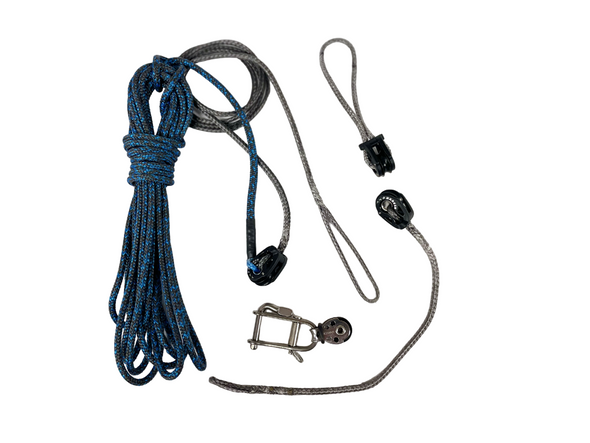


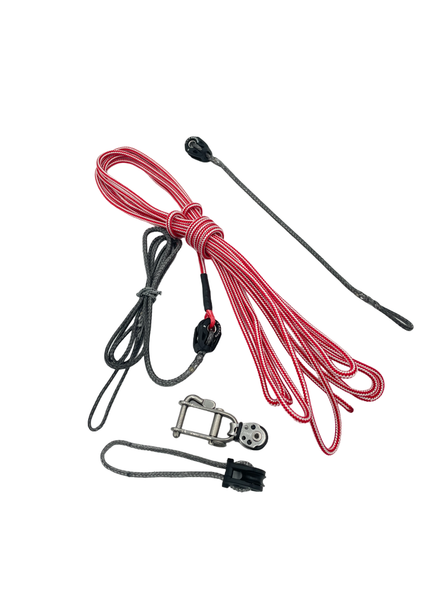

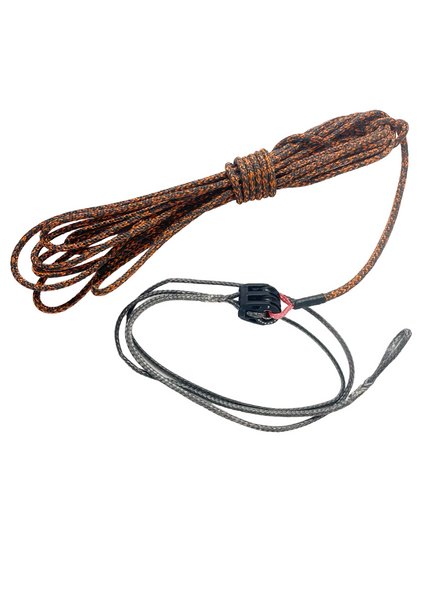



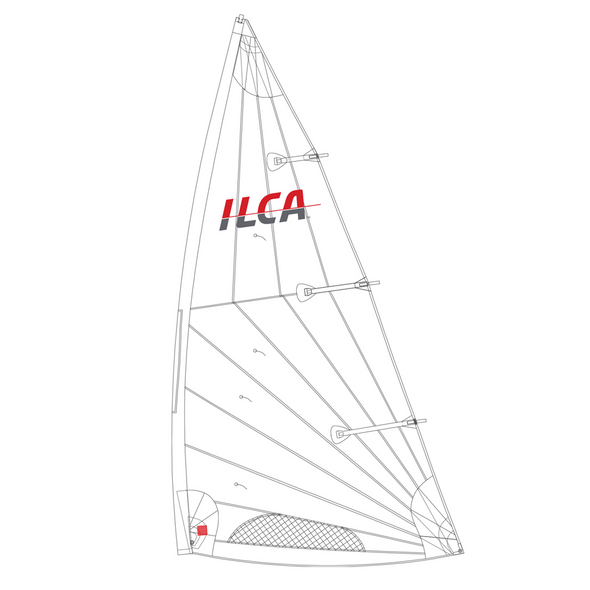


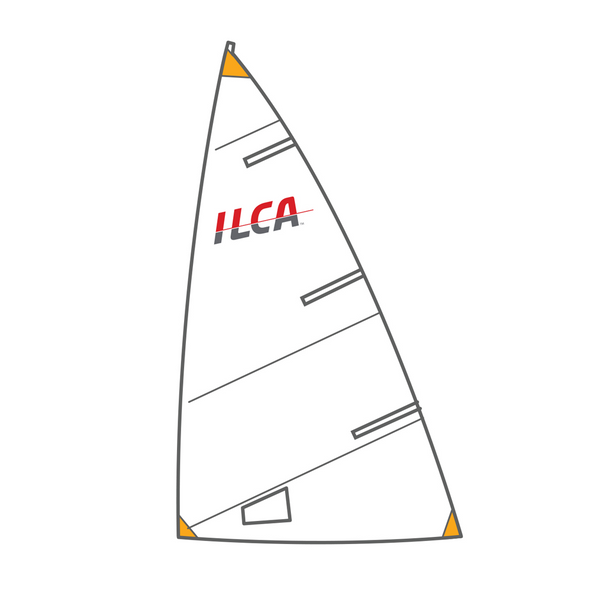
COMMENTS
Laser Radial / ILCA 6. Originally called the 'M' rig when first designed, the Laser 'Radial' sail is smaller than the 'Standard' sail at 5.76 square meters (62 square feet). At the time, it was the only Laser sail to feature the radial cut panels, which allowed the sail to be de-powered more easily in bigh winds.
Laser Radial / ILCA 6. Originally called the 'M' rig when first designed, the Laser 'Radial' sail is smaller than the 'Standard' sail at 5.76 square meters (62 square feet). At the time, it was the only Laser sail to feature the radial cut panels, which allowed the sail to be de-powered more easily in bigh winds.
Laser Radial Rig: The Laser Radial is the next step up. It uses a more flexible and slightly shorter lower mast section that the Laser Standard rig, along with an 18% smaller sail area. The Radial has a large following that continues to grow with national and international regattas and World, Open, & Youth Championships.
The recommended weight capacity for a Laser sailboat varies depending on the rig size. The ILCA 6 (Laser Radial) is suitable for sailors between 60 kg and 75 kg, while the ILCA 7 (Laser Standard) is better suited for sailors weighing 75 kg to over 90 kg. The ILCA 4 (Laser 4.7) is designed for younger and lighter sailors.
Thanks to the three rig sizes in the Laser class, the weight range in the Laser is quite large. Generally, the Laser Radial (ILCA 6) is suitable for sailors between 60kg and 75kg while the Laser Standard (ILCA 7) is suitable for sailors 75kg to over 90kg. The Laser 4.7 (ILCA 4) is designed specifically for younger and lighter sailors with an ...
Above from left to right: Laser lower mast, Radial lower mast, and Laser 4.7 lower mast. From left to right: Laser sail, Radial sail, Laser 4.7 Sail. New Race and XD models come with a rolled sail Your boat rigged will resemble one of the lasers shown above. From left to right: Laser, Radial, and Laser 4.7. Congratulations on the purchase of your
Rigging the Clew Tie Down: Laser Standard. Locate the clew tie down line from the delivery kit line bag. Wrap the clew tie down line through the clew grommet and around the boom two times (Figure 33) and secure it with a square knot (Figure 34). Be sure that the line runs on the inside of the outhaul. Grommet.
The Laser Radial rig was designed to make the Laser less overpowering for lighter sailors. It uses a smaller radial-cut sail and a shorter, bendier bottom spar that makes the boat easier to race for small adults, women and youth. The rest of its equipment is exactly the same as the full-rig Laser and 4.7. The Radial
Laser Radial is a 13′ 8″ / 4.2 m monohull sailboat designed by Bruce Kirby and built by Laserperformance.com starting in 1982. ... Rig and Sails. ... Same hull as the LASER but with a smaller sail for lighter sailors. (less than 150 lbs.)
The MKII is fast becoming the sail of choice. Class Legal Laser Radial Sail - £540; Class Compliant Laser Radial Sail - £364; Training Laser Radial Sail - £206; Laser Radial batten set - £29.81; Laser 4.7 Sails. Also known as the full rig the Laser standard sail is available in a MKI or MKII shape. The MKII is fast becoming the sail of choice.
The Laser's full size rig rewards athleticism and is best for heavier, more experienced sailors, but it can easily be converted to a Radial or 4.7 by changing just the sail and bottom spar. When you race a Laser, one hull goes a long way. Just changing the lower mast and sail, you can convert any boat from Laser to Radial to 4.7.
Practice Sail for Laser Standard Mk2 Full Rig (ILCA 7) Price: $199.99 Sale price: $159.99: Practice Sail for Laser Radial Sailboats (ILCA 6) Price: $175.00 Sale price: $139.99: Practice Sail for Laser Sailboats 4.7 (ILCA 4) Price: $165.00 Sale price: $129.99: Intensity Batten Set for ILCA/Laser Sails Fits ILCA7 Mk1 ILCA6 & ILCA4 Price: $14.99 ...
1. Get all your parts together. You should have the boat itself (the hull), the dagger board, the rudder and tiller, your mainsheet, both mast pieces, boom, boom bang and sail in one place. 2. Put together both the pieces of your mast. The bottom of the top half just slides into the top of the bottom half.
The sail area of a Laser 4.7 is about 18% smaller than a Laser Radial rig, which makes the 4.7 rig suitable to the physique of most youth sailors. Ideal weight for the 4.7 rig is between 110 lbs.-145 lbs. but 95 lbs. is OK for most conditions on Long Island Sound. The 4.7 rig is age appropriate, with some sailors starting at 12 years old.
The smallest size sail is the 4.7 Rig at ~49sf ft. The different sail sizes roughly correspond to the weight of the sailor - but can also be used to compensate for different wind conditions. The target weight range for the full rig is very roughly 165-185 pounds. A Radial is 130-155lbs, an the 4.7 is 105-125lbs. In how the Rigs are used ...
The Radial uses the same hull and fittings as the Laser Standard, but has a smaller sail (5.8 m 2) than the Standard with a different cut, and has a shorter lower mast section. Optimal weight for this rig is 121 to 159 pounds (55 to 72 kg). The Laser Radial rig has a UK Portsmouth Yardstick number of 1150. [9] Its DPN is 96.7. [10]
S.A.: Sail Area. The total combined area of the sails when sailing upwind. S.A. (reported) is the area reported by the builder. (Verses ** S.A. (100% Fore + Main Triangles) which is the area as defined by the rig measurements.) S.A. (reported) can differ depending on the size of the head sail used to calculate the S.A.
Perm-36 is allegedly the only Gulag camp that has been turned into a museum. While this is not strictly true (there are other former camps that have been partly preserved) and Perm-36 is heavily reconstructed, the museum has conserved an important part of the Soviet camp system, especially from its latter era after the death of Stalin.
Answered: Starting from November 14, some departures of the trains #83/#84 (Северный Урал) and #11/#12 (Ямал) will skip all stops from Perm-2 to Chusovskaya. These trains offer the best times to arrive in Perm from Nizhny Novgorod. May I ask what are the...
Laser Radial / ILCA 6 - The 'radial' sized Laser sail (62 square feet) is used with the 'radial' lower mast section, which is a few feet shorter than the 'standard' lower mast section to accommodate the smaller sail and allow the rig to depower more easily. Laser Radial Sails are also available from North Sails and Hyde Sails and are ILCA class ...
Perm Krai (Russian: Пе́рмский край) is a federal subject in Russia (Krai), spanning from the east of the East European Plain to the western part of the Middle Ural Mountains. The live webcams will show around this region, renowned for its first-class ballet, and the significant collection of ancient art including the rich local art in museums such as the Perm State Art Gallery.
About Mapcarta.A special thanks to Mapbox for providing outstanding maps. Text is available under the CC BY-SA 4.0 license, except for photos, directions and the map. Description text is based on the Wikivoyage page Perm Krai.Photo: Jinma, CC BY-SA 3.0.Jinma, CC BY-SA 3.0.
West Coast Sailing is your ultimate source for all things ILCA / Laser sailboat sailing, trusted by sailors worldwide and supporting the sailing community since 2005. Shop one design ILCA sailboat parts including sails, spars, deck fittings, blades, covers, dollies, accessories & upgrades. All items are also compatible with existing Laser ...